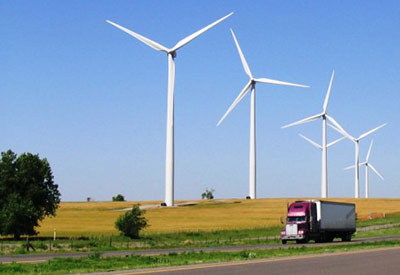Market Snapshot: Wind Continues to Gain Power in Ontario, Quebec and Alberta

Canada now has almost 10,000 megawatts of wind-powered electricity generating capacity, representing about 7% of total generating capacity. Over 1,800 megawatts of this were installed in 2014, somewhat more than the 1,600 megawatts added in 2013. Electricity production from wind facilities varies with wind speed. As a result, wind has lower utilized rates compared to many other forms of generation, meaning its share of total generation is lower than its share of installed capacity. During the first 10 months of 2014, about 1.4% of electricity produced in Canada was generated from wind.
Most of the wind capacity additions last year were located in Ontario, Quebec and Alberta. These are the three largest electricity markets in the country and offer unique advantages for wind developers.
In Quebec, vast hydroelectric supplies can be used to back-up intermittent generation sources such as wind. Quebec’s 2006-2015 energy strategy included a goal to install 4,000 megawatts of wind capacity by 2015. Quebec has about 2,400 MW of wind power currently installed, and will likely reach its target by 2018, according to the Canadian Wind Energy Association.
In Ontario, the Feed-In-Tariff program has created a stable investment environment for wind. This contributed to Ontario leading Canada in wind power capacity installations. Today, Ontario has more than 3,000 megawatts of wind capacity. A wave of Feed-In-Tariff procured wind energy is expected to be online in 2015, potentially bringing Ontario’s total to over 5,000 megawatts. In June 2013, the Ontario government ordered that large wind facilities be removed from the Feed-In-Tariff program, meaning large wind projects must be procured through competitive contracts, which will affect the addition of wind going forward.
As of January 2015, there are 17 projects in the Alberta Electric System Operator’s queue, totaling over 2,300 megawatts of wind power capacity. However, the nature of Alberta’s open market makes revenue streams for wind generators less certain than in other provinces. The average price for electricity in Alberta’s market in 2014 was $50 per megawatt-hour, which is thirty dollars less than the 2013 average and well below the Alberta Electric System Operator’s estimated all-in cost for wind ($84 per megawatt-hour).
This snapshot builds on one topic covered in the board’s recently released report: Canadian Energy Dynamics: Review of 2014. The report describes many important developments in Canadian energy markets in 2014, while providing useful information and statistics.
Source: NationTalk, Canada’s Premier Aboriginal newswire, employment, event and tender service;http://nationtalk.ca/story/market-snapshot-wind-continues-to-gain-power-in-ontario-quebec-and-alberta-in-2014/.











